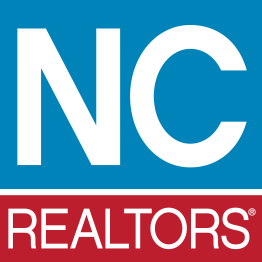Working Together to Protect Homeowners in Dare County
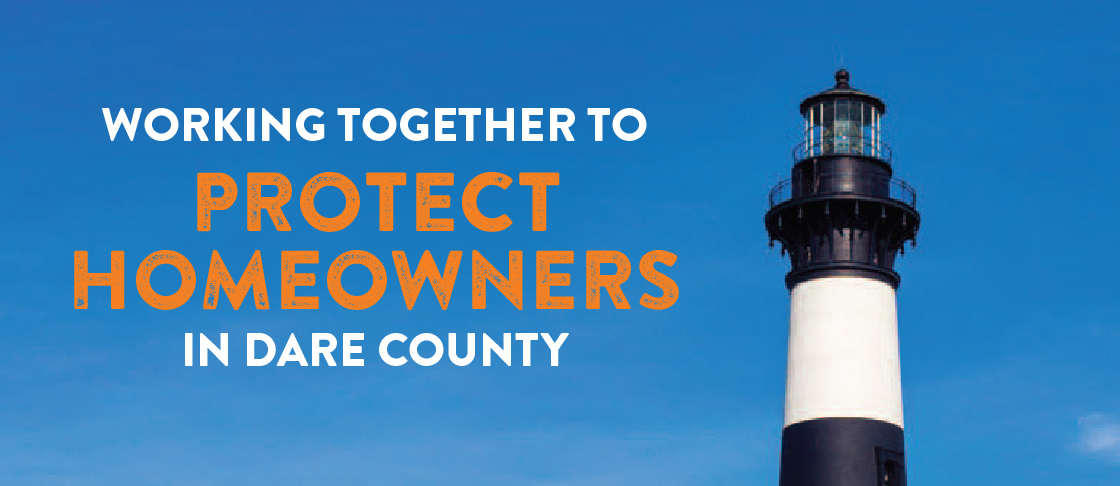
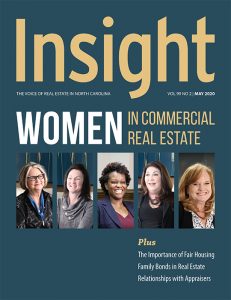 BY PORTER GRAHAM, LOCAL GOVERNMENT AFFAIRS DIRECTOR
BY PORTER GRAHAM, LOCAL GOVERNMENT AFFAIRS DIRECTOR
As members of one of the largest trade organizations in North Carolina, REALTORS® understand the importance of organized activism to ensure that regulation affecting the real estate industry is as informed and constructive as possible. Because grassroots engagement is an essential element of public advocacy, REALTORS® helped organize the NC Homeowners Alliance to facilitate property owners’ action on issues important to their rights and budgets. The Homeowners Alliance has equipped NC REALTORS® to act as community stewards, expanding government affairs activity beyond engagement with legislators and regulators on issues potentiating specific economic costs or savings for members.
Recent action by the Outer Banks Association of REALTORS® to foster community resilience in Dare County exemplifies the application of Homeowners Alliance resources to a broad public good, belying conventional portrayals of what lobbying is and does. It started with a big problem involving the revised 2020 Flood Insurance Rate Map for Dare County.
The Federal Emergency Management Agency (FEMA) delineates flood risk zones to dictate flood insurance rates and local floodplain management measures on bases specific to topographical and historic indicators of a property’s potential for flood damage. FEMA periodically reviews the accuracy of resulting Flood Insurance Rate Maps (FIRMs), which geographically represent properties’ relative flood risk in colorful bands that stretch along shorelines and curve around elevated areas.
FEMA began revising Dare County’s 2006 FIRM in 2016, collating ten years of historical flood data in computer models to project future flood hazards to Outer Banks properties through 2030. Draft FIRMs released to county officials revealed a problem: the federal statistics predated numerous named storms with substantial local flooding, significantly underrepresenting area risk. While the 2020 FIRM would favorably affect many homeowners by reducing their flood insurance premiums, it would put much of the same population at risk via exemptions from statutory requirements for flood insurance enrollment in high-risk zones. Should homeowners misinterpret their recategorization in lower-risk zones as an indication that flood insurance was no longer needed and cancel their coverage, they would forgo important protection for their properties and the grandfathered rates without which replacement flood insurance might be unaffordable should a future FIRM with newer data restore the coverage requirement. Additionally, the 2020 FIRM eliminated or substantially lowered minimum elevations for new construction, allowing homes to be built at or near natural grade in areas of repeat flood damage to elevated properties.
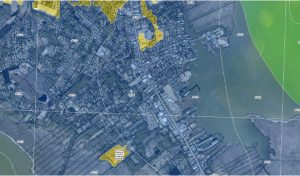 It was clear to county officials that the 2020 FIRM posed a danger to Outer Banks homeowners, and that federal corrective action was not forthcoming. To do something about it, Dare County initiated a public education campaign about the defects in the federal data, and undertook a cooperative eff ort with its six municipalities to locally codify federal construction standards expiring under the new FIRM.
It was clear to county officials that the 2020 FIRM posed a danger to Outer Banks homeowners, and that federal corrective action was not forthcoming. To do something about it, Dare County initiated a public education campaign about the defects in the federal data, and undertook a cooperative eff ort with its six municipalities to locally codify federal construction standards expiring under the new FIRM.
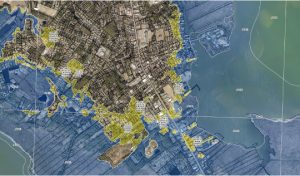
Dare County GIS Department Online Maps provide a visual comparison of the 2006 flood insurance rate map (top) and 2020 flood insurance rate map (bottom). To view the interactive map online, please visit gis.darecountync.gov/floodzones.
Essential to Dare County’s public education campaign was a direct mailer intended for distribution to the nearly 13,000 property owners transitioning out of insurance-required zones. The literature would not only inform homeowners that placement in a lower risk zone did nothing to affect their actual flood risk, but win Dare County important National Flood Insurance Program Community Rating System (NFIPCRS) points that incentivize resilience by rewarding exemplary floodplain management with additional premium reductions. Dare County derives considerable income from occupancy tax and other tourism-dependent revenues jeopardized by the pandemic.
When resulting budgetary shortfalls eliminated the funding intended to support the mailer or other direct outreach to property owners concerning flood risk, REALTORS® responded with an application to the NC Homeowners Alliance. The Alliance’s emphasis on protecting property via public education allowed Outer Banks REALTORS® to independently execute and advance community resilience by fully funding and organizing a direct mailing to all affected homeowners. Fewer than 20 days after the Outer Banks association’s initial funding request, flood risk mailers meeting NFIP-CRS standards went out from Raleigh to homeowners across Dare County. In ensuring Dare County citizens received information crucial to their wellbeing and to area economic resilience, Outer Banks REALTORS® demonstrated a unique capability for community stewardship. It was a timely opportunity, coinciding with REALTORS®’ negotiations in two Outer Banks municipalities for important modifications in proposed flood-resistant construction standards.
As Outer Banks REALTORS® operate across eight local jurisdictions, promoting commonsense consistency among area regulations is a primary association priority. Beginning in 2017, Dare County organized municipal planning staff and members of the local surveying, real estate, insurance and residential construction industries to cooperatively design consistent building and development standards to replace federal elevation mandates expiring under the 2020 FIRM. This stakeholder-inclusive process culminated in a model Flood Damage Prevention Ordinance (FDPO) distributed to Outer Banks municipalities for local codification. While six jurisdictions, including Dare County, proceeded with substantively identical FDPOs, two sought additional provisions mandating that lateral additions to existing homes meet minimum elevation requirements for new construction. Because the proposed elevation requirements governing many hypothetical additions significantly exceeded the elevation of the existing adjacent floors, they would have limited the improvement and the value of affected homes, complicated nonconforming use disclosures, and contributed additional and unnecessary regulatory complexity. REALTORS® initiated a local call for action, successfully partnering with home builders and surveyors to dominate hearings on the FDPOs and get the relevant language out of the drafts.
Outer Banks REALTORS®’ simultaneous public efforts to promote community resilience via flood risk education and oppose onerous development regulation achieved a meaningful balance and brought awareness to the complex environmental and regulatory challenges inherent in the practice of real estate on our barrier islands. It also demonstrated the utility of NC Homeowners Alliance resources as a vehicle for the kind of civic goodwill REALTORS®’ disproportionate participation on school, planning and executive boards signifies. Thank you for equipping NC REALTORS® with the resources to undertake this effort, and a special thanks to NC Homeowners Alliance Committee Chair, Wendy Harris, and staff liaison, Katharine Wendt, for your help to get the Outer Banks association across the finish line.
For more information about the NC Homeowners Alliance, please visit nchomeownersalliance.org.
